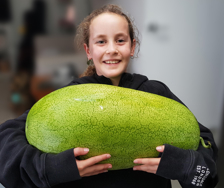Yates Account
Join now
Create a Yates account today!
Sign up to join the Yates Garden Club for monthly e-mails packed with seasonal inspiration, tips for success & exclusive promotions.
Plus if you’re a Garden Club member you can take part in the Yates Growing Community - a blog to share successes, get advice & win prizes in fun challenges along the way!

Forgot password
Enter the email address associated with your account, and we'll email you a new password.

Sometimes a garden pest or disease is so troublesome, you’ll need a spray to help you to control the problem.
Here are some useful tips for using sprays effectively and safely, to minimise risks to the creatures (bees, lizards etc.) that live in your garden.
- Identify the plant and problem. You can send a photo to us at Yates and one of our expert Horticulturists will guide you to a solution.
- Read the product label, to ensure the product is suitable to control the problem and can be used on that particular plant.
- Before spraying edible plants, check the label for the withholding period. This is the time you must wait after spraying, before the produce can be picked and eaten.
- Read (and follow) the safety directions on the pack.
- Ready-to-use containers are convenient, but they must be stored in a cool, dry place, well out of reach of children. Close the nozzle when not in use.
- If you choose a concentrate, dilute the concentrate with the correct amount of water as stipulated on the label. Try to mix only what you will need to use on that day.
- Shake well before applying.
- Spray on a still day so that spray drift will not travel to other plants or parts of the garden. On warm days a sea breeze often starts mid-morning and drops off around dusk - so early morning and dusk are the ideal 'sweet spots' for spraying in still air.
- Spraying in the early morning or early evening also reduces risk to plants (the spray is more likely to damage plants if soil is dry or plants are stressed from high daytime temperatures).
- Early morning or early evening spraying is much less likely to affect insects in the garden. Make sure sprayed plants have time to dry before foraging insects visit - they’re most numerous during the warmer part of the day. Honey bees, for example, prefer to be active when temperatures are above 13 degrees.
- Wash out your sprayer thoroughly after use and store it in a dry place.
- If you can, it's good practice to keep one sprayer just for herbicides and another for pesticides and fungicides.
- Wash your hands with soap and water when you've finished spraying.
Winter doesn't need to be dull! Add colour and fragrance to your winter garden with flowers, flowering trees and shrubs.
Winter Gardening
Here's how you can help protect your garden from chills and frost this winter.
Garden Facts & Trivia
Enjoy some jaw-dropping secrets and quirky facts about plants and gardening. Keep an eye out for these during your next trivia event!
Garden Pruning Tips
There's an old gardener's saying, that goes “wander, ponder; and prune.” We can help you put that simple proverb into practice - read on for our quick and easy tips for successful pruning.












Share
Share this article on social media